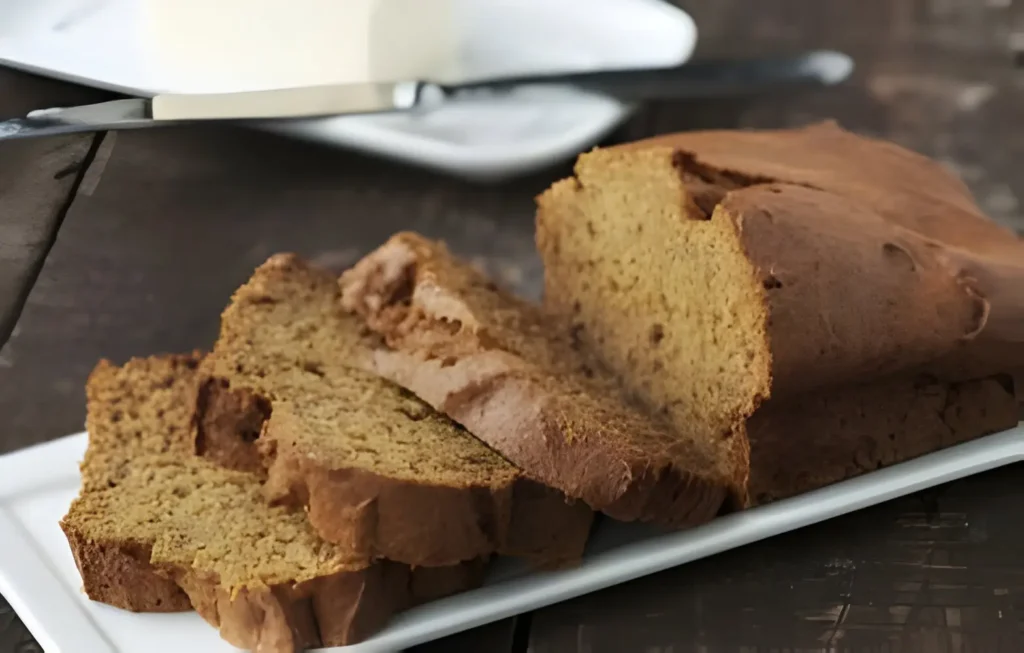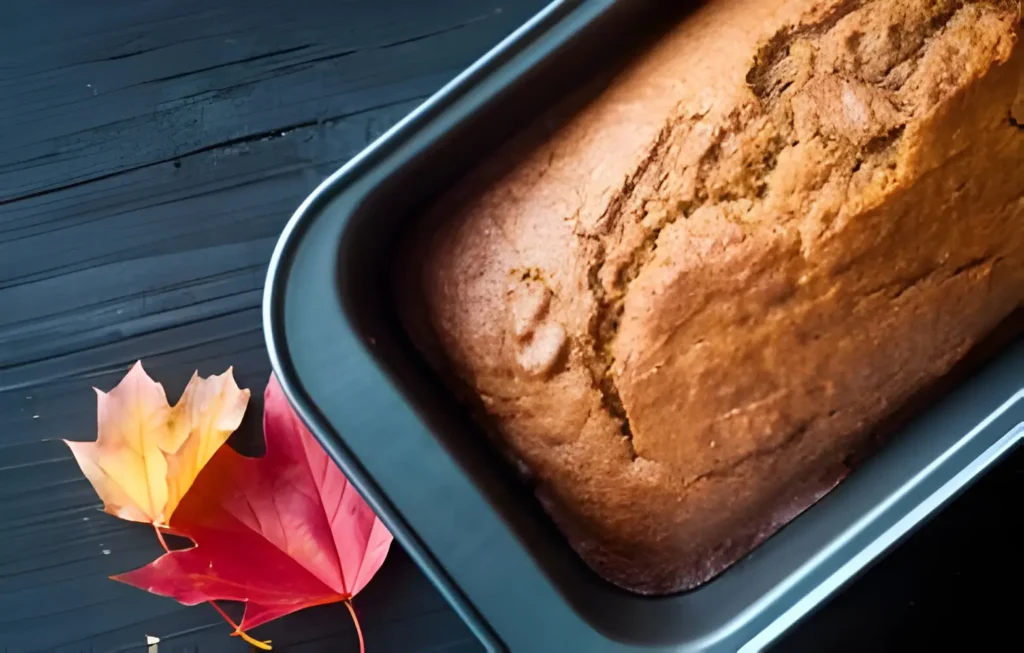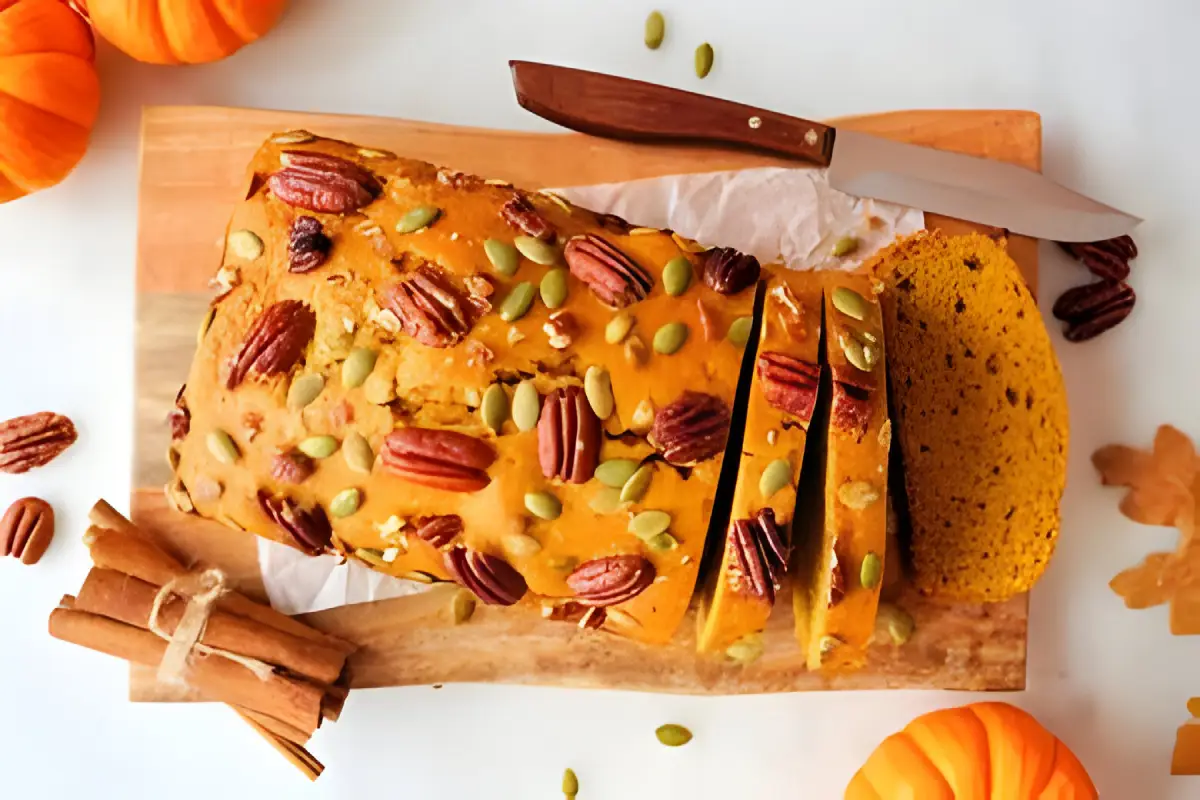Ah, pumpkin bread – that quintessential fall treat that fills our homes with its warm, spicy aroma and our hearts with a bit of seasonal joy. But what happens when anticipation turns to disappointment, and you find your beloved loaf has a gummy, unappealing texture? It’s a common baking conundrum that leaves many scratching their heads and wondering, “Why is my pumpkin bread gummy?”
Fear not, dear bakers, for this article is here to unravel the mystery of gummy pumpkin bread. We’ll explore the culprits behind this baking blunder and provide you with tips and tricks to ensure your next loaf is nothing short of perfection. So, let’s preheat our ovens and get ready to turn those gummy loaves into the tender, flavorful breads we all crave during pumpkin season.
Understanding the Basics
Before we dive into the nitty-gritty of preventing gummy pumpkin bread, let’s first understand what makes this autumnal treat so special.
What is Pumpkin Bread?
Pumpkin bread is a type of quick bread that’s rich in spices like cinnamon, nutmeg, and, of course, pumpkin puree. This delightful combination gives the bread its signature moist texture and hearty flavor. However, it’s this very moisture that can sometimes lead to a gummy texture if not managed properly.
Common Qualities of Perfect Pumpkin Bread
The ideal pumpkin bread is moist yet fluffy, with a tender crumb that melts in your mouth. It should be evenly baked, with a golden-brown crust that’s just the right amount of crisp. The spices should complement the pumpkin without overwhelming it, creating a harmonious balance of flavors that epitomize fall.
Understanding these qualities is crucial because it sets the standard for what we’re aiming to achieve. And to hit that mark, we need to pinpoint exactly what can turn a potentially perfect loaf into a gummy disappointment. Stay tuned as we explore the causes of gummy pumpkin bread and how to avoid them, ensuring your baking efforts result in nothing but the best.
Causes of Gummy Pumpkin Bread

Diving into the heart of our baking dilemma, several factors can turn your dreamy loaf into a gummy mess. Identifying these culprits is the first step toward ensuring your pumpkin bread is nothing short of perfect.
Overmixing the Batter
One of the most common reasons for gummy pumpkin bread is overmixing the batter. When you mix too vigorously or for too long, you develop the gluten in the flour more than necessary. This can lead to a dense and gummy texture, as the bread becomes too elastic. Remember, pumpkin bread is a quick bread, which means it should be mixed just until the dry and wet ingredients are combined.
Incorrect Measurements
Baking is a science, and accuracy is key. Incorrect measurements, especially with the flour or liquid ingredients, can throw off the delicate balance required for perfect pumpkin bread. Too much liquid can make the batter too wet, leading to a gummy texture, while too little flour won’t provide enough structure, resulting in a loaf that doesn’t set properly.
Oven Temperature Issues
Oven temperature issues can also contribute to gummy pumpkin bread. An oven that’s too hot can cause the outside of the bread to bake too quickly, leaving the inside undercooked and gummy. Conversely, an oven that’s not hot enough might not cook the bread thoroughly, resulting in a loaf that’s too moist.
Underbaking
Finally, underbaking is a straightforward cause of gummy pumpkin bread. If the bread is taken out of the oven too soon, the interior won’t have a chance to fully cook, leaving you with a wet, gummy texture. It’s crucial to bake the bread for the full recommended time and to use a toothpick or cake tester to ensure it’s fully baked before removing it from the oven.
Understanding these common causes of gummy pumpkin bread sets the stage for addressing and preventing them. In the next section, we’ll explore practical tips and techniques to avoid these pitfalls, ensuring your pumpkin bread is perfectly moist and fluffy every time.
How to Prevent Gummy Pumpkin Bread

Now that we’ve identified the culprits behind gummy pumpkin bread, let’s arm ourselves with strategies to prevent this common baking blunder. By following these tips, you can ensure your pumpkin bread turns out perfectly moist and fluffy.
Proper Mixing Techniques
The key to avoiding overdeveloped gluten and a gummy texture is to use proper mixing techniques. When combining your wet and dry ingredients, do so gently and only until they’re just combined. A folding motion, rather than vigorous stirring, can help minimize gluten development. If using an electric mixer, keep it on the lowest speed and mix for the shortest time possible.
Accurate Measuring
Precision is crucial in baking, so accurate measuring of ingredients is non-negotiable. Use a digital kitchen scale for the most precise measurements, especially for flour, as cup measurements can vary significantly. For liquid ingredients, use clear measuring cups designed for liquids and check the measurement at eye level.
Oven Temperature Calibration
An inaccurately calibrated oven can wreak havoc on your baking. To ensure your oven temperature is accurate, consider using an oven thermometer to verify the internal temperature. If you find discrepancies, you may need to adjust the temperature setting accordingly or have your oven calibrated by a professional.
Testing for Doneness
To avoid underbaking, always test for doneness before removing your pumpkin bread from the oven. Insert a toothpick or cake tester into the center of the loaf; it should come out clean or with a few moist crumbs attached, but not wet batter. If the bread isn’t done, continue baking and check at regular intervals until it passes the test.
By incorporating these preventative measures into your baking routine, you can significantly reduce the risk of ending up with gummy pumpkin bread. Remember, each loaf of bread is an opportunity to refine your skills and intuition as a baker. In the next section, we’ll explore how to troubleshoot and salvage a gummy loaf, should you ever encounter one, and how to adjust your recipe for future success.
Troubleshooting Gummy Pumpkin Bread
Even with the best intentions and careful preparation, baking mishaps can happen, leaving you with a loaf of pumpkin bread that’s less than perfect. If you find yourself facing a gummy pumpkin bread, don’t despair. There are ways to salvage it and learn from the experience for next time.
Salvaging Underbaked Bread
If you’ve taken your pumpkin bread out of the oven only to discover it’s underbaked and gummy, there’s a potential fix. Preheat your oven to the original baking temperature, and once it’s ready, return the bread to the oven for an additional 5-10 minutes. Keep a close eye on it and perform the doneness test again before taking it out. Covering the top with aluminum foil can prevent the crust from over-browning during this extra baking time.
Adjusting Recipes for Next Time
If you find that your pumpkin bread consistently turns out gummy, it may be time to adjust your recipe or technique for future attempts:
- Reduce the Moisture: Consider reducing the amount of pumpkin puree or other liquid ingredients slightly. A small adjustment can make a big difference in the final texture of your bread.
- Increase Flour: Adding a bit more flour can help absorb excess moisture. However, be cautious not to add too much, as this can lead to a dry loaf.
- Alter Baking Time: If underbaking is a recurring issue, try extending the baking time by a few minutes. Remember, oven temperatures can vary, so what works for one recipe may need adjustment in your oven.
- Experiment with Oven Placement: Sometimes, the position of your bread in the oven can affect how it bakes. Try placing it on a different rack to see if it improves the outcome.
By troubleshooting and making adjustments, you can turn a baking mishap into a valuable learning experience. Remember, baking is as much about science as it is about art, and each attempt brings you closer to mastering the perfect loaf of pumpkin bread.
In the next section, we’ll answer some frequently asked questions about baking pumpkin bread, providing you with even more insights to help you achieve baking success.
FAQs
In our journey to perfect pumpkin bread, several questions often arise. Let’s tackle some of the most frequently asked questions to demystify the process further and ensure your next loaf is flawless.
Can I fix gummy pumpkin bread?
Once pumpkin bread has cooled and is found to be gummy, it’s challenging to fix the texture entirely. However, slicing and toasting it can help improve its texture and make it more enjoyable to eat. For future bakes, focus on preventing the issue by following the tips outlined in this article.
How do I adjust for high altitude baking?
High altitude can affect baking significantly. To adjust for high altitudes, you may need to increase the oven temperature by 15-25°F and decrease the baking time slightly. Additionally, consider reducing the amount of baking powder and sugar, and increasing the amount of liquid to compensate for the drier environment and faster rising due to lower air pressure.
Can I substitute ingredients in pumpkin bread?
Yes, substitutions can be made, but they may affect the final outcome. For example, using a different type of flour, like whole wheat for all-purpose, can make the bread denser. Substituting oil for butter can change the moisture content. Always consider how substitutions might affect the texture and taste of your bread.
Why did my pumpkin bread sink in the middle?
Pumpkin bread can sink in the middle for several reasons, including overmixing the batter (which incorporates too much air), opening the oven door too early (causing a sudden temperature drop), or underbaking. Ensure your oven is preheated properly, mix the batter just until combined, and test for doneness before removing it from the oven.
Conclusion
Embarking on the quest to bake the perfect pumpkin bread can be as thrilling as it is challenging. Throughout this article, we’ve explored the nuances that transform a simple loaf into a fall masterpiece, and the pitfalls that might leave it less than perfect. From the importance of not overmixing your batter to the precision required in measuring ingredients, each step in the baking process plays a crucial role in achieving that ideal texture and flavor.
We’ve delved into the reasons behind gummy pumpkin bread and offered solutions to avoid this common issue. By understanding the science of baking and adjusting techniques and ingredients as needed, you can ensure your pumpkin bread is always a hit. Whether you’re adjusting for high altitude or experimenting with ingredient substitutions, the key is to learn and adapt.
Remember, baking is a journey filled with both successes and learning opportunities. Each loaf you bake brings you one step closer to perfection. So, keep your mixer ready, your oven preheated, and your spirit undaunted. With the insights and tips provided in this article, you’re well-equipped to tackle any baking challenge that comes your way.
Here’s to your next batch of pumpkin bread being your best yet. Happy baking!

